 Unlike many signs of aging, and menopause, joint pain may not diminish once you rest the joint or after hormones level out after menopause. But there are many lifestyle changes that can help ease the pain and prevent it from getting worse. Fill up on anti-inflammatory foods. Some foods tamp down inflammation while others spur it on. For the right balance, eat more of these inflammation fighters: berries, broccoli, avocado, tomatoes, green leafy vegetables like spinach and kale, citrus fruits, cherries, fatty fish like salmon, olive oil, nuts, dark chocolate (in moderation), olive oil, green tea, turmeric, and ginger. And avoid foods that contribute to inflammation such as refined carbs like white bread and cake, fried foods, red meat and processed meats like hot dogs, soda and other sugary beverages, and foods with trans fatty acids like margarine. Get some exercise. Regular movement keeps joints lubricated so they flex and extend more easily and with less pain. Low-impact activities like yoga, walking, swimming, and cycling are gentler on the joints than high-impact sports like running. Keep tabs on your weight Excess weight puts stress on your joints as you move, so losing even a few pounds can mean exponential relief for weight bearing joints like hips and knees. Lift some weights. Strengthening the supporting muscles around a joint provides stability. When joints are stable, they function better, and you have less risk of damage or an injury. Stay hydrated. Drink plenty of water to keep tissues moist and supple. In menopause, your body doesn’t retain water as well as it used to, so it’s important to replace the lost moisture. Water—not sports drinks, sodas, or coffee—is your best choice. If you need variety, add a few pieces of fruit for flavor. Build in stretch breaks. Too much sitting or computer time? At regular intervals, for instance every 20 or 30 minutes, stop what you’re doing and move. If sitting, stretch your forearms, do some wrist circles, or squeeze a soft ball. Get up from your desk and march in place and then stretch your legs and hips. The motion will help to keep your joint lubricated and minimize stiffness and pain. Strengthen your core. Your body is one long chain of joints and muscles, and weakness at one part affects others. When the core muscles in your abdomen, back, hips, and buttocks are strong, it can help to take pressure off joints throughout the body. De-stress. We know, we probably sound like a broken record, but when it comes to joint pain, stress is especially problematic. Stress raises cortisol levels, and cortisol can cause additional inflammation in joints. Do what you can to keep stress in check. If stressed, consider taking a walk — in nature is best for a triple crown of stress reduction - nature, time away, and moderate exercise. If going outside is not an option, close your eyes and take 4-5 deep breaths. You’ll feel the difference! Consider supplements. Magnesium may help. According to the Arthritis Foundation, "Magnesium strengthens bones; maintains nerve and muscle function; regulates heart rhythm and blood sugar levels; and helps maintain joint cartilage." Other good options are glucosamine and chondroitin, fish oil [omega 3 fats], turmeric, or ginger. Apply ice and/or heat. Which you choose may be a personal preference. Generally, ice helps when there’s obvious inflammation (swelling, redness). It may also ease achiness after exercise, or you might simply find that it numbs your pain anytime. Heat loosens muscles, enhances flexibility, and increases circulation. For these reasons, heat (heating pad, warm shower, paraffin wax) may be helpful when used before exercise. Apply either for no more than 20 minutes at a time and protect your skin by having something like a thin towel between your body and the ice pack or heating pad. Rub on relief. Topical pain relievers like Arnicare and Biofreeze can tame the pain. In addition, lightly touching and massaging the area, even with regular lotion, may help desensitize you to the pain.
0 Comments
I am an admitted science nerd. I love learning how the brain & body works and why we seem driven to do certain things. I ran across this information [site reference at end of post] and wanted to share it with you all. In my next post I will discuss what specific cravings mean as a message from our body.
Sweet treats? Savory bites? Salty nibbles? Most of us have go-to foods that we always want to indulge in, yet many feel guilty giving in to these cravings. Our cravings stem from complex interactions between our digestive system, brain, hormones, and even our environment. Unlike a hunger sensation that starts in our stomach, cravings stem from our brain. Cravings are often related to positive feelings or experiences associated with specific foods. Certain foods, such as foods high in sugar and fat content, trigger our brains to release opioids, which are chemicals that bind to receptors in our brain that make us feel pleasure. We also associate certain foods to positive experiences or memories. Furthermore, we only crave food that we have had before because our brain remembers pleasurable physical or psychological experiences associated with this food. Aside from the physical and psychological markers of food cravings, some theories suggest that humans have innate cravings for high-calorie, energy-dense foods. These types of foods were a survival mechanism for when we were hunter-gatherers. https://www.palomahealth.com/learn/what-food-cravings-mean-hormones?_kx=Lo5UERZo-L8kZApE6sI8S5bRcg-T5UoOWDqCNCjRoCo_rSKjr_Zmw8NR4byIH5tw.JaQNm6 Animal proteins have the highest amount of protein and their iron is readily utilized by the body. For those who don't eat a lot of meat by preference or are vegetarian, beans/lentils are the best way to reach our protein needs. They also provide a nice amount of fiber, vitamins & minerals, and no saturated fat. This combination can help improve cholesterol levels and improves digestion. There are several ways to incorporate beans in the diet - add them to soups, chili, as a dip like hummus, snacking on edamame or using them in as a salad topper. To get the maximum protein amount, checkout the list below. High Protein Beans & Lentils:
Great Northern Beans 9.7 gms; Lentils 9 gms; Split Peas 8.2 gms; Black Beans 7.6 gms; Black Eyed Peas 7.5 gms; Navy Beans 7.5 gms; Pinto Beans 7.2 gms; Cranberry Beans – also known as Roman Beans 7.2 gms; Red Kidney Beans 7.2 gms; Chickpeas 6.3 gms; Cannellini Beans 6.2 gms; Lima Beans 6 gms; Edamame 5.6 gms; Green Peas 4.3 gm Inflammation is at the root of most disease. There are many anti-inflammatory foods, herbs, and spices that are easy to incorporate in your daily diet that will help reduce and prevent inflammation. Try to eat from each Color Group several times each week. Use the spices as much as able - consider chai tea, curry powder, taco seasoning [with turmeric], green tea with turmeric, ginger, & cinnamon as an easy way to get several at once. These blends can be used in small or large amounts, based on your taste preference. Experiment a little or look for recipes using the below veggies, fruits, spices, etc. Enjoy!
I am sad, I eat
I am irritated with my mother, I eat I am frustrated with myself, I eat I am happy about my new apartment, I eat. 32 year old client 5 Helpful Ways to Sooth Yourself Without Food – a sampling of ideas Mindful Meditation Techniques
Menopause can be one of a women's most challenging time in life. Unusual feeling [hot flashes], changing moods and hormonal fluctuations are tough to navigate. I want to share this information on a product multiple clients have used with success. Each person will respond differently, of course, and effectiveness can take a month or 6 weeks to properly evaluate.
Proper nutrition during pregnancy is essential to support your baby’s growth and development
and to help you stay your healthiest. Give your baby the best possible start in life by eating a variety of nutrient dense foods, avoiding potentially harmful foods, and taking the necessary food safety precautions. This PDF cover all of this info including caloric needs, nutrients with their benefits for baby & mom, foods containing the nutrient, and the amount recommended. Foods to avoid and alternatives begins on page 4. Please contact me for more information or to get more in depth information. In recent years research has discovered that what is eaten in the lead up to conception, during pregnancy and whilst breastfeeding impacts the genetic programming of babies. The first step, of course, is conception. Sadly, this is not as easy as one might think.
About 10 percent of women(6.1 million) in the United States ages 15-44 have difficulty getting pregnant or staying pregnant, according to the Centers for Disease Control and Prevention (CDC). Infertility can be caused by physical or medical conditions such as damage to the fallopian tubes or early menopause, however, nutrition, lifestyle habits, and weight play a critical role. This article discusses weight, common conditions that may impact fertility and dietary considerations. Please contact me for additional information or if you are struggling with pregnancy related issues. https://bit.ly/nutritionconception For appointments - https://bit.ly/NutrAndreaAppt This information is from a document provided by the SCAN DPG along with the ACSM
Using Heart Rate to Aid in Weight Loss [for those below age 65]
Fiber contributes to good health in many ways.
• It keeps food moving smoothly and regularly through your body. • It helps prevent heart disease by lowering blood cholesterol levels. • It may lower the risk of developing certain cancers. • It helps to control blood glucose levels in diabetes. • A high-fiber diet tends to make you feel fuller sooner so you eat less. This can help with weight control. How Much Fiber Do You Need? Here are daily recommendations for most healthy adults: • Men ages 50 years and younger: 38 grams fiber per day • Men ages 51 years and older: 30 grams fiber per day • Women ages 50 years and younger: 25 grams fiber per day • Women ages 51 years and older: 21 grams fiber per day |
AuthorWrite something about yourself. No need to be fancy, just an overview. Archives
October 2024
Categories |
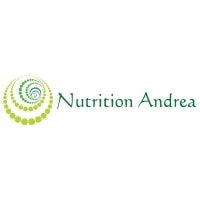

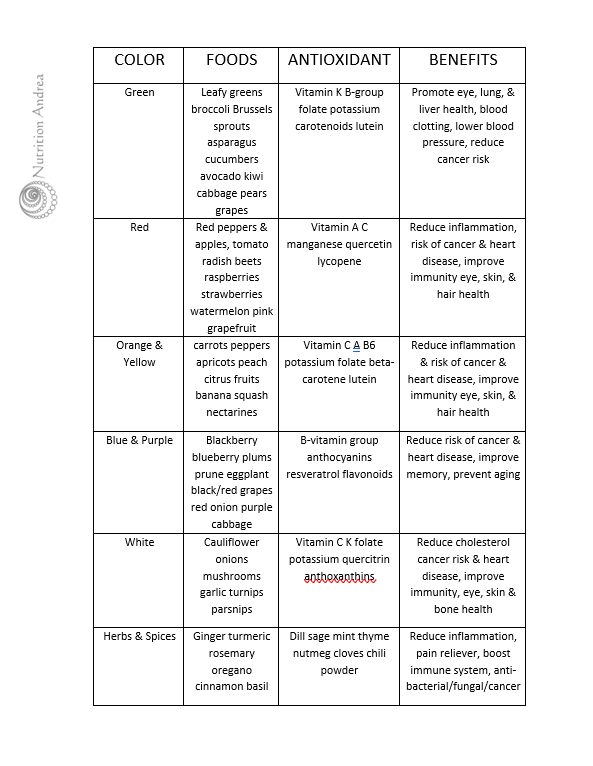
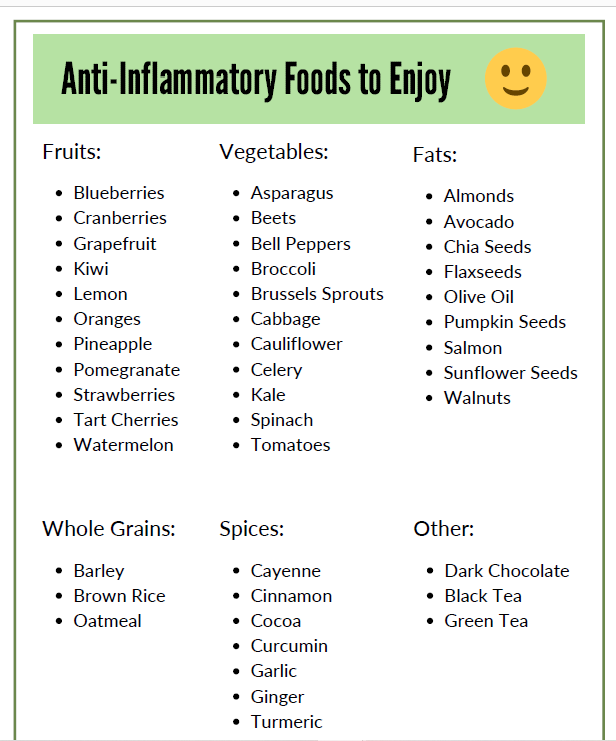

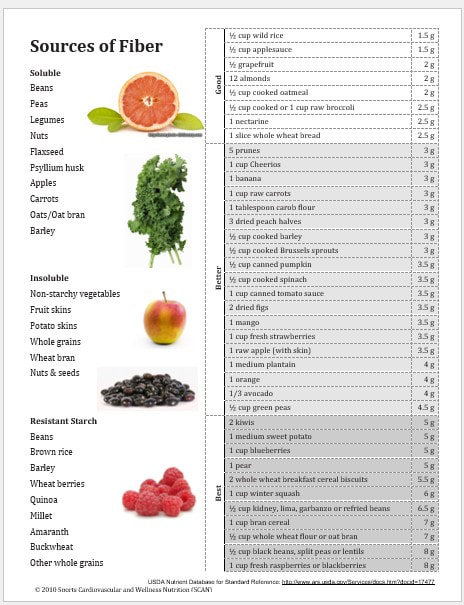
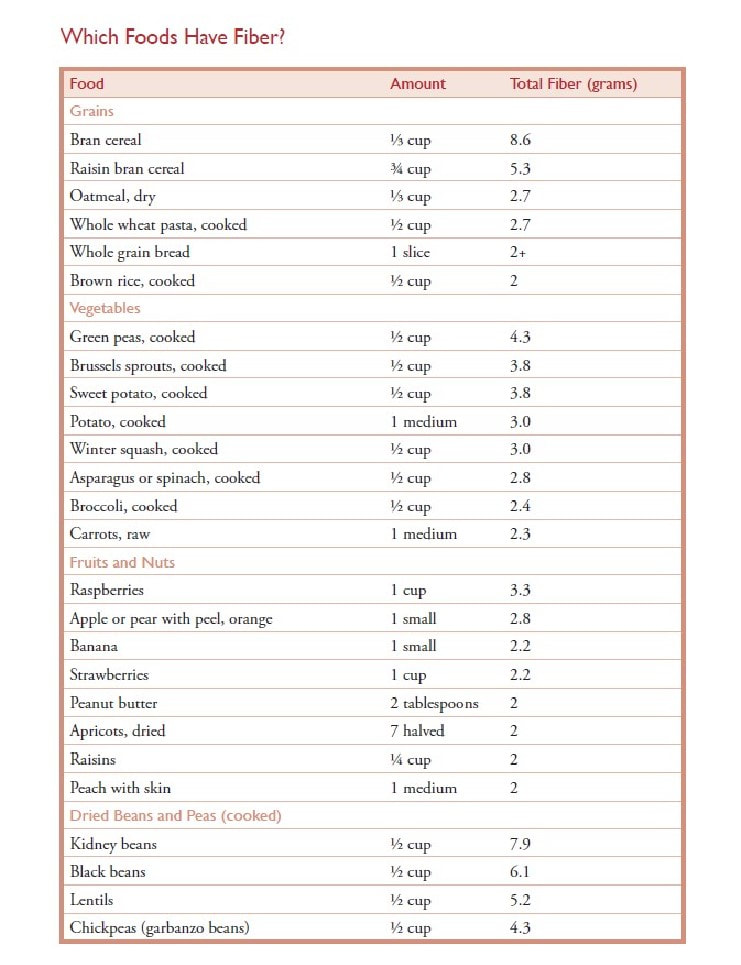
 RSS Feed
RSS Feed